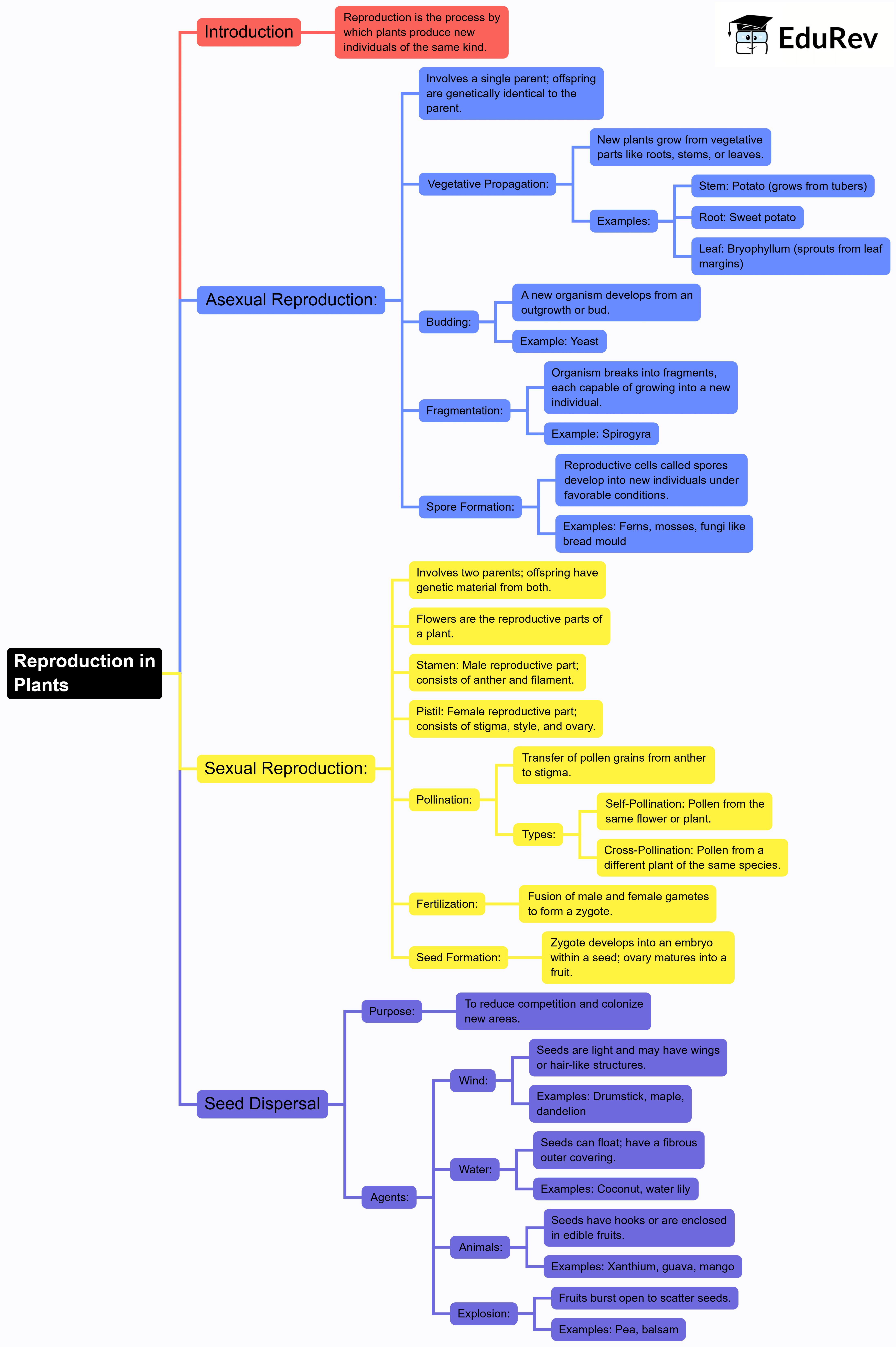Class 7 Exam > Class 7 Notes > Science Class 7 (Old NCERT) > Mind Map: Reproduction in Plants
Mind Map: Reproduction in Plants | Science Class 7 (Old NCERT) PDF Download

The document Mind Map: Reproduction in Plants | Science Class 7 (Old NCERT) is a part of the Class 7 Course Science Class 7 (Old NCERT).
All you need of Class 7 at this link: Class 7
|
112 videos|286 docs|28 tests
|
FAQs on Mind Map: Reproduction in Plants - Science Class 7 (Old NCERT)
| 1. What is reproduction in plants? |  |
Ans. Reproduction in plants is the biological process by which plants produce offspring or new individuals of the same species. It involves the production of seeds, spores, or other reproductive structures, which can then grow into new plants.
| 2. How do plants reproduce asexually? |  |
Ans. Plants can reproduce asexually through various methods such as vegetative propagation, fragmentation, and budding. Vegetative propagation involves the growth of new plants from vegetative parts like stems, roots, or leaves. Fragmentation occurs when a plant breaks into fragments, and each fragment can develop into a new plant. Budding is a form of asexual reproduction where a new plant develops as an outgrowth or bud from the parent plant.
| 3. What is the role of flowers in plant reproduction? |  |
Ans. Flowers play a crucial role in plant reproduction. They are the reproductive structures of flowering plants and contain male and female reproductive organs. The male reproductive organ, called the stamen, produces pollen, while the female reproductive organ, known as the pistil, contains the ovary where fertilization takes place. Flowers attract pollinators like insects, birds, or wind, which aid in the transfer of pollen from the stamen to the pistil, enabling fertilization and seed formation.
| 4. How do plants reproduce sexually? |  |
Ans. Sexual reproduction in plants involves the fusion of male and female gametes to produce offspring with genetic variations. The male gametes are contained in pollen grains, which are transferred to the female reproductive organ through pollination. The pollen tube grows from the pollen grain and delivers the sperm cells to the ovary, where fertilization occurs. After fertilization, the ovary develops into a fruit, and the ovules inside it develop into seeds, ensuring the propagation of new plants.
| 5. What are the different methods of pollination in plants? |  |
Ans. Pollination in plants can occur through various methods, including self-pollination and cross-pollination. Self-pollination happens when the pollen from the stamen reaches the pistil of the same flower or another flower on the same plant. Cross-pollination occurs when the pollen from one plant is transferred to the pistil of a different plant of the same species. Cross-pollination is often aided by wind, water, animals, or insects, which carry the pollen from one plant to another.
Related Searches
















